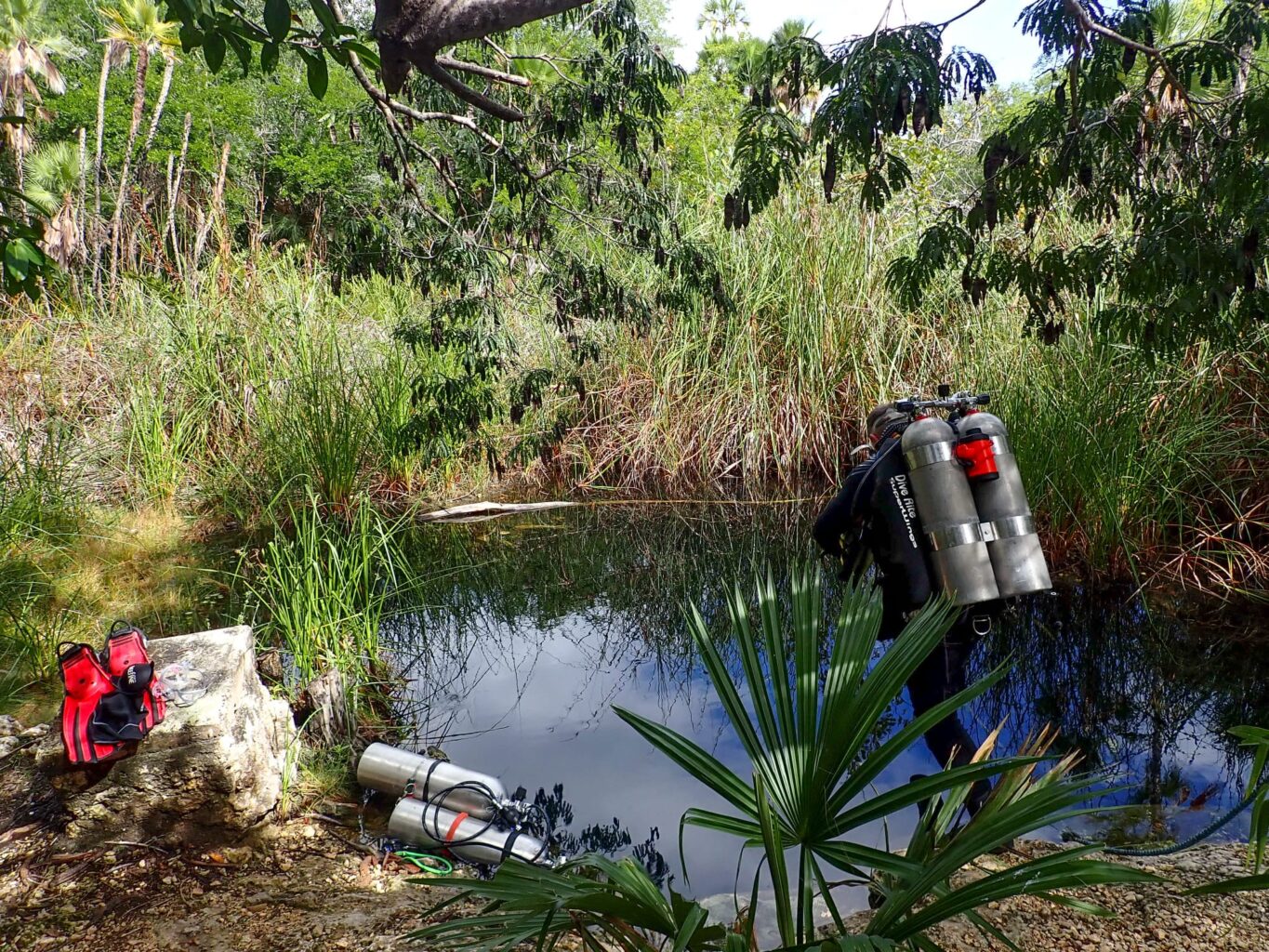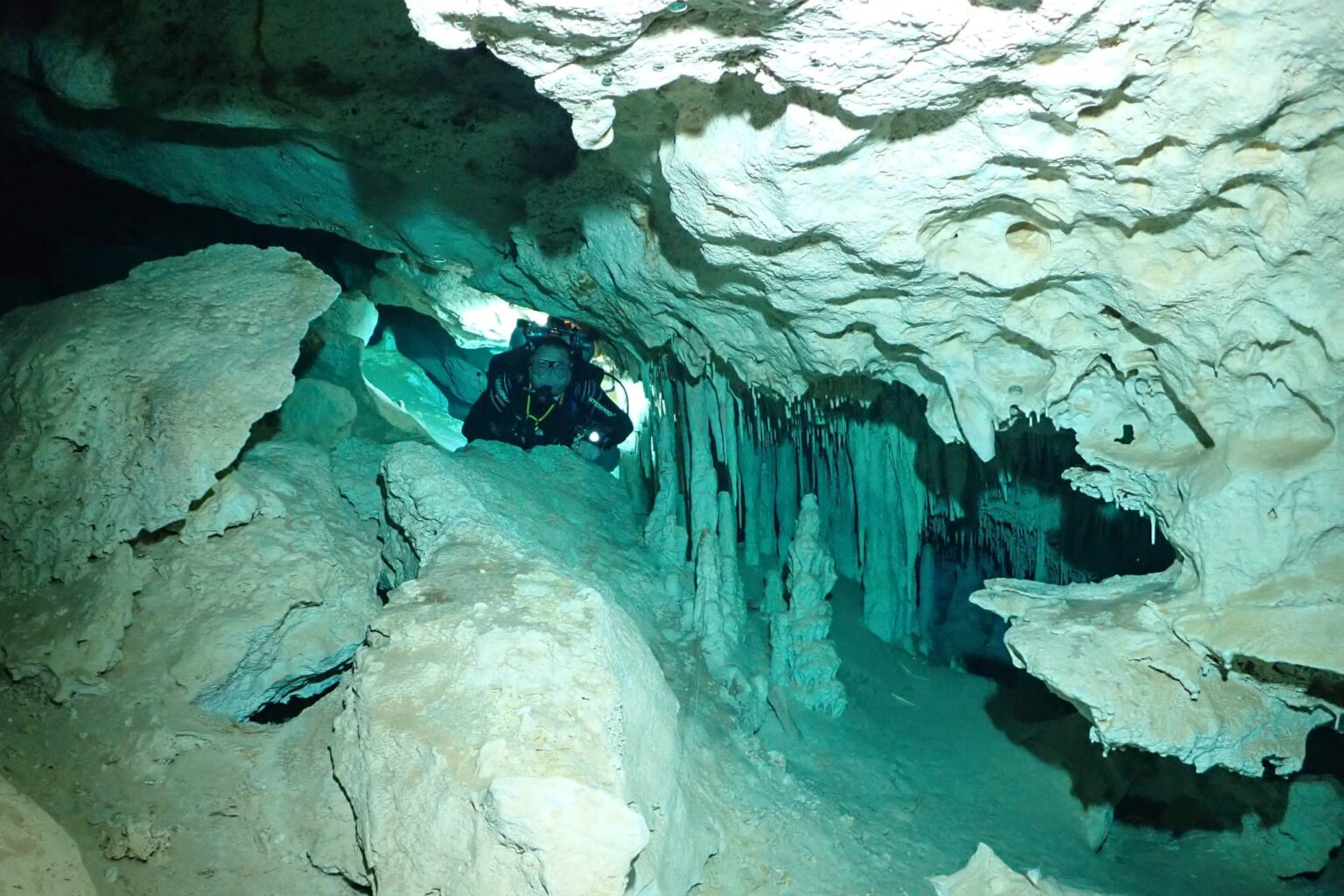Author, Diver and sometimes Electrician Dave Appleby has been diving since 1993 and cave diving since 2007, his first cave experience being our local favourite Carwash. This is the first in a series of articles regarding specifically the Yucatan and Tulum and more generally Cave Diving as a passion.
So, you’ve seen the documentaries on TV. You saw the Thai football team rescue, so you decide you want to try a new extreme sport: Cave Diving, ‘The most dangerous sport in the world’. OK, the door is over there; don’t let it hit you on the way out.
What does a Michelin-starred restaurant have in common with Cave Diving? On the surface, the answer would appear to be ’nothing’ however, if, excuse the pun, we dig a little deeper, the answer is more than you may think. Basically, it comes down to one word: repetition. We train and drill with equipment until handling a non-normal situation becomes autonomic and drives muscle memory and incident management on autopilot. You instinctively know what’s wrong and with the tools available from training, the run down the decision tree is subconscious. The same goes for a three-star menu; everything is identical every time; you don’t need to consult a menu; you just know what should happen and when.

Back in the heyday, cave diving earned a deserved reputation for being dangerous. There were few rules, no standardisation and no overall diving ethos. Despite early attempts to formalise the process, such as Sheck Exley’s seminal 1979 book “Basic Cave Diving: A Blueprint for Survival”. There were still accidents, many many accidents.
In the early late 80s-early 90s, it became too much. Various training agencies under the aegis of the US National Association of Cave Diving (NACD) got together to pool data on what was killing divers. A massive accident analysis was undertaken, and commonalities were identified. Accidents and incidents do not happen in isolation; there is almost always a causal chain of events, and many small events feed together until criticality. Pilots and Divers call this the Swiss cheese model. When the holes line up between each precursor event, the odds of criticality increase exponentially with each precursor. In the case of cave diving, this boiled down to.
- Lack of/improper/no training.
- Improper gas management.
- Dangerous/inadequate equipment and/or equipment failure.
- Navigation failure/inadequate exit marking.
All these apply to recreational diving too; however, the cave overhead environments are much less forgiving and more hostile.
A complete training regimen was written with key skills and benchmarks for students to achieve. The actual development of the courses was left to the individual agencies; however, regardless of the agency a student chooses, these skills will be within the core curricula skills required to pass. Accordingly, accidents today, with the exception of Parker Turner in 1991 , can almost entirely be identified with at least one failure of the rules. The training now hangs on the following:
“The Good Alert Divers Lives”
- Training
- Guideline
- Air
- Depth
- Lights
So, what’s different with caves?
To start, we use equipment that is very different from recreational diving. We carry more equipment, and a lot of said equipment is backup/redundancy items as ‘failure proofing’. Some of the configurations are very different from recreational, and everything has a purpose, if it doesn’t, it has no place in a cave environment. For example:
- Three light sources.
- At least two cutting devices.
- Two tank pressure gauges.
- Spare mask.
- Reels and spools of line. Lots of reels and spools.
So, a team of two divers will have a total of six light sources. Enough to reduce the possibility of having no light source to as near zero as possible.
We dive using a rule of thirds when it comes to gas management. One-third in, one-third out, one-third reserve. This means should the absolute worst happen and one diver has a complete gas failure, there is always enough remaining with the second diver for both to be able to exit safely. This is aided by our ‘long hose’ which is exactly what it says it is. Normally secured safely so as not to be a snag hazard, this is approximately 7ft/2.1m long and means one diver can swim behind the other in case of needing to pass through restrictions.

We all carry spare reels or spools of line for joining the various lines, ensuring we have a continuous line to the surface. Along with line markers, these ensure you can always follow a line home. One training exercise involves following a line from deep within a system back to the surface without any lighting being available. In another exercise on the full cave qualification course, the student is taken away from the mainline, lights out, and it’s time to find the line again; yes, it’s stressful, but that’s the point.
When you start the Cavern course, certain assumptions are made. The largest is that you are totally comfortable underwater and have your buoyancy skills totally mastered. If you haven’t, you need to. Cave flooring varies from cave to cave; gravel isn’t going to care if you plus your 50 Kg of equipment pile into it. Try that with a sediment or a clay bottom and you’re going to be very grateful for all those line laying exercises. One totally avoidable accident in Italy occurred when a guide took three recreational divers 20m into a cave where daylight could still be seen. The bottom was ploughed up and visibility destroyed along with a blackout caused by a siltout. No line, inadequate training, inadequate equipment. The holes lined up. An almost identical incident happened in the Yucatan when a cavern guide took two clients into the cave area. Another completely avoidable accident.
While the above may come over as intimidating, and the training can be intense, you will learn a massive amount in a very short time. All of these skills apply to recreational diving as well. Skills taught include, but are not limited to:
- Gas management – key in any diving environment.
- Emergency/non-normal incident management.
- Advanced buoyancy techniques.
- Navigation skills.
- Line laying and retrieval skills (you will be doing a lot of this).
- Personal mental and physiological management skills.
Then, once qualified, you continue to learn, it’s like driving; you learnt the key skills and then build confidence and experience. Continuing education isn’t just limited to formal courses. Equipment rigging is one area that you can always change. There are a couple of ‘standard’ configurations: DIR, Hogarthian, Florida, etc… It’s really up to you to find what works best for you. Asking questions about why someone rigs something in a particular way will almost always lead to a discourse on personal equipment configuration and the rationale behind why x is in position y.
I’ve personally been cave diving since 2007 and qualified under the umbrella of the NACD. My equipment configuration is a mix of Hogarthian (Hog rig) with touches of DIR thrown in, but what works for me may not for you. However, I am indebted to Steve Crosby of ProTec Tulum, who two days ago, following our first dive together, made a suggestion I move my wing and backplate position slightly, less than 3cm. I did, and a minor pain in the neck/shoulder muscles I’ve tolerated for years vanished. Old dogs can indeed learn new tricks.
The downside of cave diving is (although you probably know from recreational) that diving involves leaving your dignity at the door. You will have a pratfall, you will accidentally tie your torch to the line doing line drills (that may be just me although I live in the hope I’m not the only idiot out there). But you will, above all else, have fun and get to see a world few people get to experience.
I am indebted to Kim’s team at ProTec Tulum who have aided and abetted my cave addiction for many years now. Long may it continue.
